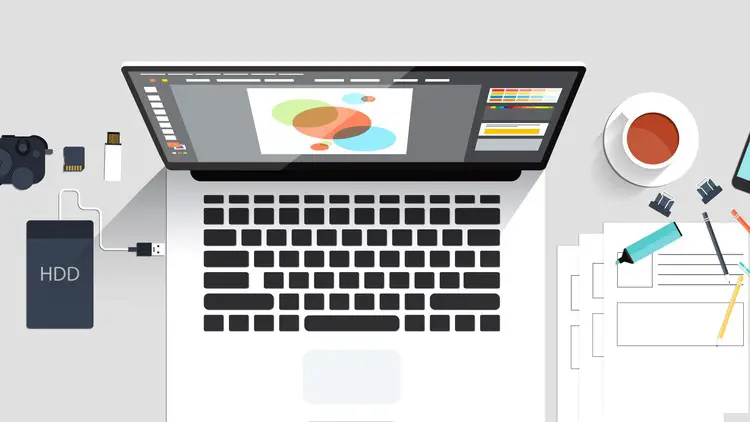Learning design principles and programs are easy enough for anyone dedicated. The Web has given us unlimited resources from detail tutorials to communities helping us improve as designers. This love for design sparks a business idea — a way to monetize our design skills.
The problem: Getting clients.
This low-barrier to entry is also one of the freelance design challenges. If everyone can learn design principles, then everyone becomes your competitor. How can you land clients when so many are willing to work for free or rock-bottom prices?
Let’s explore that question and the ways you can attract (paying) clients.

Laying the Foundation: Mastering Your Tools and Principles
The end goal of this post is you having built a portfolio website, featuring design work you can be both proud of and that attracts clients. There are many tools that’ll get you there with no particular “best option.”
What are the design tools you should consider?
- Adobe Suite: The full suite, but especially Photoshop, Audition, InDesign, and Lightroom, as these provide robust design and photo manipulation tools. These are the industry standard meaning mastering them now will place you in a perfect position if hired-on for gigs.
- Online Visual Tools: Many small businesses need basic images for their social feeds. Tools like Canva, Vectr, and PicMonkey handle the work without high costs. These are very easy to learn and use to deliver top-notch work for your future clients.
Ask fellow designers which tools they use to get a good understanding of which direction to take.
Mastery is half about understanding your tools and the other half is about keeping up with design trends. Even if you don’t agree with trends, your clients probably will. Follow design influencers and tutorial blogs to keep challenging and growing your design skills.
Launching the Ideas: Creating a Lead Generating Portfolio Website
There are numerous ways to go about building online portfolio sites — this includes:
- Online Frameworks — Provide online, visual site building tools featuring domain, hosting, and plugins. This is ideal for quickly launching your portfolio if you’re not inclined to code.
- Content Management Systems — Like WordPress, Joomla, or Drupal require extra work configuring the site but give you a lot of flexibility if you’re the type to frequently make changes.
- Done-For-You — As in sourcing freelancers and fellow designers to build the site. This has a higher cost but will be crafted to your specifications.
What should you have on the portfolio site?
- A welcoming homepage featuring who you are, what you do, and how to get in touch
- A portfolio section showing off your best work and giving a behind-the-scenes look at how you work
- A blog to share your expertise, build search traffic, and to give you something to share on social
- A services page collecting what you offer and how people can inquire about your services.
Have a look at what fellow designers do for their sites and replicate common features. Then, make it unique through great pieces, content, and some personality of your own.
Being Everywhere: Spreading Your Name and Building a Funnel
Building the site is easy with the right tools. Your work shows value and confidence.
But… how do you actually get people to the site and reaching out to you for services?
Try these:
- Create Targeted Content: Write industry-related topics, tutorials, round-ups, and guides to attract the type of client you want to attract. Provide something valuable and funnel the visitor to your services page.
- Be Active on Social: Turn your existing social media accounts into lead generation machines. Rework the accounts giving them a professional tone and appearance. Share your portfolio’s content, build relationships, and pitch ideas or offer help to others to get on people’s radar.
You could also explore online advertising and marketing through these channels but your content and social media will be significant lead generators on their own. Master those two, like your design skills, and you’ll have clients coming through.
Final Thoughts and a Helpful Suggestion
Don’t let competition deter your business ideas and goals. There are many people out there who are willing to work for free or rock-bottom prices — let them have it. Place your sights on businesses willing to pay well for skills and quality work.
Try this: Quote double your typical asking price.
It’ll seem like you’re charging too much… but not really. Understand businesses spend thousands on advertising and marketing — they can surely afford a quality designer like yourself. Plus, you’re not selling yourself short and will have wiggle room to negotiate.
So: Master your tools, build that portfolio, and be everywhere! Go get ’em!
The post How to Attract More Clients to Your Design Business appeared first on The Crazy Programmer.
from The Crazy Programmer https://www.thecrazyprogrammer.com/2018/08/how-to-attract-more-clients-to-your-design-business.html
Comments
Post a Comment